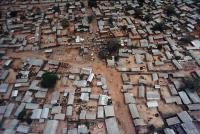 Thoughts around the interview and conference CIUDAD SUR presented by Pablo Brugnoli, last June 26th on “Próximo Futuro”, Gulbenkian Programme for Contemporary Culture. According to Pablo Brugnoli, CIUDAD SUR reviews ideas, practices and projects by collectives of architects and artists, whose recent works reinterpret cities from the southern cone of America (Argentina, Brazil, Chile, and Uruguay). The link between them is their focus on the value of communitarian reconstruction, regarding both the procedures and the socio-cultural dynamics.
Thoughts around the interview and conference CIUDAD SUR presented by Pablo Brugnoli, last June 26th on “Próximo Futuro”, Gulbenkian Programme for Contemporary Culture. According to Pablo Brugnoli, CIUDAD SUR reviews ideas, practices and projects by collectives of architects and artists, whose recent works reinterpret cities from the southern cone of America (Argentina, Brazil, Chile, and Uruguay). The link between them is their focus on the value of communitarian reconstruction, regarding both the procedures and the socio-cultural dynamics.
23.05.2011 | by Cristina Salvador
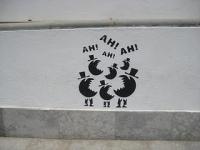 This paper explores Lisbon’s contemporary music scenes within the perspective of music and cultural circulation. It discusses the various ways in which music and cities interact, in a context of increased inter-connectedness between the local and the global. It suggests that music creation and performance (and more broadly, cultural innovation), cannot be reduced to neither grassroots nor institutional initiatives. On the premises of the existence of a so-called “global culture”, cities tend to reinvent themselves by promoting various (and eventually competing) self-definitions. In the case of Lisbon, this tendency is accompanied by a seemingly increased desire to connect (or re-connect) with the Lusophone world, eventually informing Lisbon’s self-images as an inclusive and multicultural city. In this process, new forms of ethnicity may gain visibility in the marketing of Luso-World music (or World music as practiced in the Portuguese-speaking countries). At the horizon of imagined cities as “transcultural megacities”, music tends to gain agency in the promotion of senses of place and belonging in, and to the city.
This paper explores Lisbon’s contemporary music scenes within the perspective of music and cultural circulation. It discusses the various ways in which music and cities interact, in a context of increased inter-connectedness between the local and the global. It suggests that music creation and performance (and more broadly, cultural innovation), cannot be reduced to neither grassroots nor institutional initiatives. On the premises of the existence of a so-called “global culture”, cities tend to reinvent themselves by promoting various (and eventually competing) self-definitions. In the case of Lisbon, this tendency is accompanied by a seemingly increased desire to connect (or re-connect) with the Lusophone world, eventually informing Lisbon’s self-images as an inclusive and multicultural city. In this process, new forms of ethnicity may gain visibility in the marketing of Luso-World music (or World music as practiced in the Portuguese-speaking countries). At the horizon of imagined cities as “transcultural megacities”, music tends to gain agency in the promotion of senses of place and belonging in, and to the city.
18.05.2011 | by Jorge de La Barre
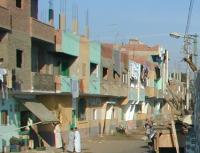 The virtual space of communication through social networks took part in the square’s new configuration, as in some way participated the space created by the window that we all opened. Even more determinant was the physical and real presence of the demonstrators and their capacity for resistance. The occupation of the square leads us to rethink public space, but the question that is imposed is what will then have to change so that Tahir Square can maintain the new configuration it conquered, a place of intervention, communication and meeting, and that it doesn’t go back to its old condition of museum space for tourists and road circulation?
The virtual space of communication through social networks took part in the square’s new configuration, as in some way participated the space created by the window that we all opened. Even more determinant was the physical and real presence of the demonstrators and their capacity for resistance. The occupation of the square leads us to rethink public space, but the question that is imposed is what will then have to change so that Tahir Square can maintain the new configuration it conquered, a place of intervention, communication and meeting, and that it doesn’t go back to its old condition of museum space for tourists and road circulation?
28.04.2011 | by Cristina Salvador
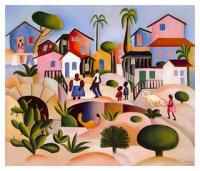 The most significant distinction in the way favela builders and architects treat space relates to temporality, since sheltering and inhabiting imply a completely different space-temporal process. It’s as if architects spatialized time, and favela builders temporalize space. This opposition becomes clear when we compare the way architects conceive space – always starting from a project, with spatial and formal projections for a near future – and the way favelas are built – where there is never a pre-established project, and the formal outline of the future construction begins to appear only when the construction process is well underway, and even then, it is never fixed or pre-defined as is the case of a traditional project.
The most significant distinction in the way favela builders and architects treat space relates to temporality, since sheltering and inhabiting imply a completely different space-temporal process. It’s as if architects spatialized time, and favela builders temporalize space. This opposition becomes clear when we compare the way architects conceive space – always starting from a project, with spatial and formal projections for a near future – and the way favelas are built – where there is never a pre-established project, and the formal outline of the future construction begins to appear only when the construction process is well underway, and even then, it is never fixed or pre-defined as is the case of a traditional project.
27.04.2011 | by Paola Bernstein Jacques
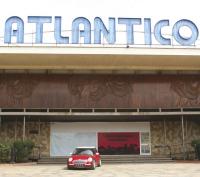 The cinemas in Angola are points of reference in the towns where they found a home. And there are many of them. It’s the kind of infrastructure that you find all over the country, because their heyday started way before independence, allowing the Portuguese colonial authorities to take entertainment – but especially regime propaganda – all over the country. What remains for the telling are the architectural lines, the pleasure for shows and multi-purpose spaces.
The cinemas in Angola are points of reference in the towns where they found a home. And there are many of them. It’s the kind of infrastructure that you find all over the country, because their heyday started way before independence, allowing the Portuguese colonial authorities to take entertainment – but especially regime propaganda – all over the country. What remains for the telling are the architectural lines, the pleasure for shows and multi-purpose spaces.
13.12.2010 | by Miguel Gomes
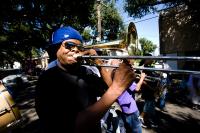 After Slavery was abolished, there were many Social Aid and Pleasure Clubs formed in New Orleans which were benevolent societies that organized social activities, provided funerals for the members and helped maintain the tradition alive. When people doubted that New Orleans could be reborn form Hurricane katrina, it was those societies and many other traditions that live in the hearts of the people that motivated them to return and rebuild their lives in the city they love.
After Slavery was abolished, there were many Social Aid and Pleasure Clubs formed in New Orleans which were benevolent societies that organized social activities, provided funerals for the members and helped maintain the tradition alive. When people doubted that New Orleans could be reborn form Hurricane katrina, it was those societies and many other traditions that live in the hearts of the people that motivated them to return and rebuild their lives in the city they love.
17.11.2010 | by José Fernandes
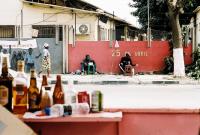 Luanda 2005. Some predators arrive possessed by amino acids of opportunities. It is the beginning of a series of projects and businesses, the rules are drawn with which wild capitalism will be mercilessly ingrained. Consolidated peace, will and dynamism, spirit of reconstruction. One invests in the country with economic growth potential, rich in natural resources where no one is out to lose.
Luanda 2005. Some predators arrive possessed by amino acids of opportunities. It is the beginning of a series of projects and businesses, the rules are drawn with which wild capitalism will be mercilessly ingrained. Consolidated peace, will and dynamism, spirit of reconstruction. One invests in the country with economic growth potential, rich in natural resources where no one is out to lose.
01.10.2010 | by Marta Lança
 The Portuguese presentation at the 2009 São Paulo Architecture Biennial, “Five Africas/Five Schools”, reflects the different realities of the African countries whose official language is our own: for each of them a school prototype developed by a like number of architecture teams. For Guinea-Bissau, Pedro Maurício Borges has designed a Basic School in the city of Cacheu. In a context of extreme poverty , the possibility of building a school should suffice to suspend any other kind of critical judgment. Nevertheless, beyond the initiative’s eventual humanitarian value, there is still architecture. In a place where like everything else it is limited by what exists, one has to make do with very little. But with many other things as well: with memories of a country that interested the world.
The Portuguese presentation at the 2009 São Paulo Architecture Biennial, “Five Africas/Five Schools”, reflects the different realities of the African countries whose official language is our own: for each of them a school prototype developed by a like number of architecture teams. For Guinea-Bissau, Pedro Maurício Borges has designed a Basic School in the city of Cacheu. In a context of extreme poverty , the possibility of building a school should suffice to suspend any other kind of critical judgment. Nevertheless, beyond the initiative’s eventual humanitarian value, there is still architecture. In a place where like everything else it is limited by what exists, one has to make do with very little. But with many other things as well: with memories of a country that interested the world.
17.05.2010 | by Diogo Seixas Lopes
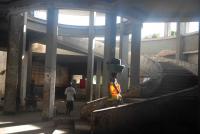 As in any occupied house it has it’s living and organizational rules. There, the following representatives rule: the unity secretary and the secretary of the hallway, block and floor who meet up to solve the residents’ problems, and to conduct the residents’ court in one of the hotel’s former suites. There, discussions concerning who is more entitled to housing (a woman with children has the upper hand), or about who is throwing dirty water onto someone else’s balcony, take place. There are two fundamental rules: “keep the cleanliness and the respect.”
As in any occupied house it has it’s living and organizational rules. There, the following representatives rule: the unity secretary and the secretary of the hallway, block and floor who meet up to solve the residents’ problems, and to conduct the residents’ court in one of the hotel’s former suites. There, discussions concerning who is more entitled to housing (a woman with children has the upper hand), or about who is throwing dirty water onto someone else’s balcony, take place. There are two fundamental rules: “keep the cleanliness and the respect.”
14.05.2010 | by Marta Lança
 How is cosmopolitanism to be practiced, if the city persists in creating barriers between insiders and outsiders? If traditional boroughs of Lisbon are inhabited by recent immigrants, they are easily fixed into specific territories, such as Martim Moniz, Praça de S. Domingo or Restauradores, some parts of Alfama, former Jewish and Moorish ‘ghettos’, a testimony to the ever permanent ‘multicultural’ character of the city, as well as its more tolerant and racist moments.
How is cosmopolitanism to be practiced, if the city persists in creating barriers between insiders and outsiders? If traditional boroughs of Lisbon are inhabited by recent immigrants, they are easily fixed into specific territories, such as Martim Moniz, Praça de S. Domingo or Restauradores, some parts of Alfama, former Jewish and Moorish ‘ghettos’, a testimony to the ever permanent ‘multicultural’ character of the city, as well as its more tolerant and racist moments.
13.05.2010 | by Manuela Ribeiro Sanches
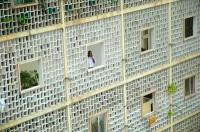 November 1975, quick as lightening thousands of persons flee the city. The colony is over, the counting begins from zero. Luanda is now an empty space and waits, anxious, for its new tenants. New habitants, new freedom. Like “squatters” now inside buildings marked by old moments, memories, scents from another time, Luanda anticipates and receives the new occupants with open doors.
November 1975, quick as lightening thousands of persons flee the city. The colony is over, the counting begins from zero. Luanda is now an empty space and waits, anxious, for its new tenants. New habitants, new freedom. Like “squatters” now inside buildings marked by old moments, memories, scents from another time, Luanda anticipates and receives the new occupants with open doors.
13.05.2010 | by Kiluanji Kia Henda
 Thoughts around the interview and conference CIUDAD SUR presented by Pablo Brugnoli, last June 26th on “Próximo Futuro”, Gulbenkian Programme for Contemporary Culture. According to Pablo Brugnoli, CIUDAD SUR reviews ideas, practices and projects by collectives of architects and artists, whose recent works reinterpret cities from the southern cone of America (Argentina, Brazil, Chile, and Uruguay). The link between them is their focus on the value of communitarian reconstruction, regarding both the procedures and the socio-cultural dynamics.
Thoughts around the interview and conference CIUDAD SUR presented by Pablo Brugnoli, last June 26th on “Próximo Futuro”, Gulbenkian Programme for Contemporary Culture. According to Pablo Brugnoli, CIUDAD SUR reviews ideas, practices and projects by collectives of architects and artists, whose recent works reinterpret cities from the southern cone of America (Argentina, Brazil, Chile, and Uruguay). The link between them is their focus on the value of communitarian reconstruction, regarding both the procedures and the socio-cultural dynamics.  This paper explores Lisbon’s contemporary music scenes within the perspective of music and cultural circulation. It discusses the various ways in which music and cities interact, in a context of increased inter-connectedness between the local and the global. It suggests that music creation and performance (and more broadly, cultural innovation), cannot be reduced to neither grassroots nor institutional initiatives. On the premises of the existence of a so-called “global culture”, cities tend to reinvent themselves by promoting various (and eventually competing) self-definitions. In the case of Lisbon, this tendency is accompanied by a seemingly increased desire to connect (or re-connect) with the Lusophone world, eventually informing Lisbon’s self-images as an inclusive and multicultural city. In this process, new forms of ethnicity may gain visibility in the marketing of Luso-World music (or World music as practiced in the Portuguese-speaking countries). At the horizon of imagined cities as “transcultural megacities”, music tends to gain agency in the promotion of senses of place and belonging in, and to the city.
This paper explores Lisbon’s contemporary music scenes within the perspective of music and cultural circulation. It discusses the various ways in which music and cities interact, in a context of increased inter-connectedness between the local and the global. It suggests that music creation and performance (and more broadly, cultural innovation), cannot be reduced to neither grassroots nor institutional initiatives. On the premises of the existence of a so-called “global culture”, cities tend to reinvent themselves by promoting various (and eventually competing) self-definitions. In the case of Lisbon, this tendency is accompanied by a seemingly increased desire to connect (or re-connect) with the Lusophone world, eventually informing Lisbon’s self-images as an inclusive and multicultural city. In this process, new forms of ethnicity may gain visibility in the marketing of Luso-World music (or World music as practiced in the Portuguese-speaking countries). At the horizon of imagined cities as “transcultural megacities”, music tends to gain agency in the promotion of senses of place and belonging in, and to the city.  The virtual space of communication through social networks took part in the square’s new configuration, as in some way participated the space created by the window that we all opened. Even more determinant was the physical and real presence of the demonstrators and their capacity for resistance. The occupation of the square leads us to rethink public space, but the question that is imposed is what will then have to change so that Tahir Square can maintain the new configuration it conquered, a place of intervention, communication and meeting, and that it doesn’t go back to its old condition of museum space for tourists and road circulation?
The virtual space of communication through social networks took part in the square’s new configuration, as in some way participated the space created by the window that we all opened. Even more determinant was the physical and real presence of the demonstrators and their capacity for resistance. The occupation of the square leads us to rethink public space, but the question that is imposed is what will then have to change so that Tahir Square can maintain the new configuration it conquered, a place of intervention, communication and meeting, and that it doesn’t go back to its old condition of museum space for tourists and road circulation?  The most significant distinction in the way favela builders and architects treat space relates to temporality, since sheltering and inhabiting imply a completely different space-temporal process. It’s as if architects spatialized time, and favela builders temporalize space. This opposition becomes clear when we compare the way architects conceive space – always starting from a project, with spatial and formal projections for a near future – and the way favelas are built – where there is never a pre-established project, and the formal outline of the future construction begins to appear only when the construction process is well underway, and even then, it is never fixed or pre-defined as is the case of a traditional project.
The most significant distinction in the way favela builders and architects treat space relates to temporality, since sheltering and inhabiting imply a completely different space-temporal process. It’s as if architects spatialized time, and favela builders temporalize space. This opposition becomes clear when we compare the way architects conceive space – always starting from a project, with spatial and formal projections for a near future – and the way favelas are built – where there is never a pre-established project, and the formal outline of the future construction begins to appear only when the construction process is well underway, and even then, it is never fixed or pre-defined as is the case of a traditional project.  The cinemas in Angola are points of reference in the towns where they found a home. And there are many of them. It’s the kind of infrastructure that you find all over the country, because their heyday started way before independence, allowing the Portuguese colonial authorities to take entertainment – but especially regime propaganda – all over the country. What remains for the telling are the architectural lines, the pleasure for shows and multi-purpose spaces.
The cinemas in Angola are points of reference in the towns where they found a home. And there are many of them. It’s the kind of infrastructure that you find all over the country, because their heyday started way before independence, allowing the Portuguese colonial authorities to take entertainment – but especially regime propaganda – all over the country. What remains for the telling are the architectural lines, the pleasure for shows and multi-purpose spaces.  After Slavery was abolished, there were many Social Aid and Pleasure Clubs formed in New Orleans which were benevolent societies that organized social activities, provided funerals for the members and helped maintain the tradition alive. When people doubted that New Orleans could be reborn form Hurricane katrina, it was those societies and many other traditions that live in the hearts of the people that motivated them to return and rebuild their lives in the city they love.
After Slavery was abolished, there were many Social Aid and Pleasure Clubs formed in New Orleans which were benevolent societies that organized social activities, provided funerals for the members and helped maintain the tradition alive. When people doubted that New Orleans could be reborn form Hurricane katrina, it was those societies and many other traditions that live in the hearts of the people that motivated them to return and rebuild their lives in the city they love.  Luanda 2005. Some predators arrive possessed by amino acids of opportunities. It is the beginning of a series of projects and businesses, the rules are drawn with which wild capitalism will be mercilessly ingrained. Consolidated peace, will and dynamism, spirit of reconstruction. One invests in the country with economic growth potential, rich in natural resources where no one is out to lose.
Luanda 2005. Some predators arrive possessed by amino acids of opportunities. It is the beginning of a series of projects and businesses, the rules are drawn with which wild capitalism will be mercilessly ingrained. Consolidated peace, will and dynamism, spirit of reconstruction. One invests in the country with economic growth potential, rich in natural resources where no one is out to lose.  The Portuguese presentation at the 2009 São Paulo Architecture Biennial, “Five Africas/Five Schools”, reflects the different realities of the African countries whose official language is our own: for each of them a school prototype developed by a like number of architecture teams. For Guinea-Bissau, Pedro Maurício Borges has designed a Basic School in the city of Cacheu. In a context of extreme poverty , the possibility of building a school should suffice to suspend any other kind of critical judgment. Nevertheless, beyond the initiative’s eventual humanitarian value, there is still architecture. In a place where like everything else it is limited by what exists, one has to make do with very little. But with many other things as well: with memories of a country that interested the world.
The Portuguese presentation at the 2009 São Paulo Architecture Biennial, “Five Africas/Five Schools”, reflects the different realities of the African countries whose official language is our own: for each of them a school prototype developed by a like number of architecture teams. For Guinea-Bissau, Pedro Maurício Borges has designed a Basic School in the city of Cacheu. In a context of extreme poverty , the possibility of building a school should suffice to suspend any other kind of critical judgment. Nevertheless, beyond the initiative’s eventual humanitarian value, there is still architecture. In a place where like everything else it is limited by what exists, one has to make do with very little. But with many other things as well: with memories of a country that interested the world.  As in any occupied house it has it’s living and organizational rules. There, the following representatives rule: the unity secretary and the secretary of the hallway, block and floor who meet up to solve the residents’ problems, and to conduct the residents’ court in one of the hotel’s former suites. There, discussions concerning who is more entitled to housing (a woman with children has the upper hand), or about who is throwing dirty water onto someone else’s balcony, take place. There are two fundamental rules: “keep the cleanliness and the respect.”
As in any occupied house it has it’s living and organizational rules. There, the following representatives rule: the unity secretary and the secretary of the hallway, block and floor who meet up to solve the residents’ problems, and to conduct the residents’ court in one of the hotel’s former suites. There, discussions concerning who is more entitled to housing (a woman with children has the upper hand), or about who is throwing dirty water onto someone else’s balcony, take place. There are two fundamental rules: “keep the cleanliness and the respect.”  How is cosmopolitanism to be practiced, if the city persists in creating barriers between insiders and outsiders? If traditional boroughs of Lisbon are inhabited by recent immigrants, they are easily fixed into specific territories, such as Martim Moniz, Praça de S. Domingo or Restauradores, some parts of Alfama, former Jewish and Moorish ‘ghettos’, a testimony to the ever permanent ‘multicultural’ character of the city, as well as its more tolerant and racist moments.
How is cosmopolitanism to be practiced, if the city persists in creating barriers between insiders and outsiders? If traditional boroughs of Lisbon are inhabited by recent immigrants, they are easily fixed into specific territories, such as Martim Moniz, Praça de S. Domingo or Restauradores, some parts of Alfama, former Jewish and Moorish ‘ghettos’, a testimony to the ever permanent ‘multicultural’ character of the city, as well as its more tolerant and racist moments.  November 1975, quick as lightening thousands of persons flee the city. The colony is over, the counting begins from zero. Luanda is now an empty space and waits, anxious, for its new tenants. New habitants, new freedom. Like “squatters” now inside buildings marked by old moments, memories, scents from another time, Luanda anticipates and receives the new occupants with open doors.
November 1975, quick as lightening thousands of persons flee the city. The colony is over, the counting begins from zero. Luanda is now an empty space and waits, anxious, for its new tenants. New habitants, new freedom. Like “squatters” now inside buildings marked by old moments, memories, scents from another time, Luanda anticipates and receives the new occupants with open doors. 